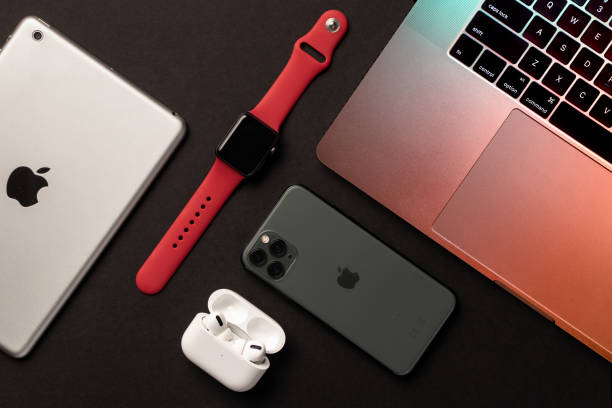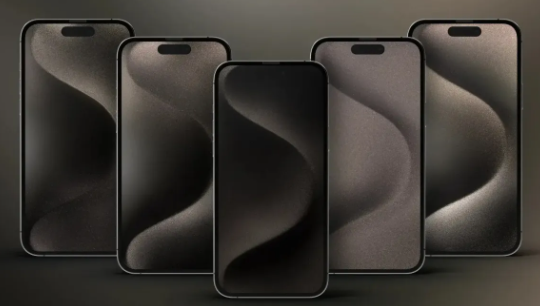Table of Contents
- Introduction
- Understanding Reciprocal Tariffs
- The Tech Exemption Announcement
- Why Phones, Computers, and Chips Were Excluded
- The Economic and Political Calculations
- What This Means for American Consumers
- Impact on Global Supply Chains
- Silicon Valley Reacts
- Geopolitical Implications of the Tariff Exemption
- Could More Exemptions Follow?
- Expert Opinions and Industry Analysis
- Conclusion: Smart Strategy or Economic Retreat?
1. Introduction
In a move that’s both surprising and revealing, former U.S. President Donald Trump announced that smartphones, personal computers, and semiconductor chips will be exempt from the “reciprocal tariffs” he plans to impose on U.S. trade partners. While tariffs have long been a cornerstone of Trump’s economic playbook, the decision to spare these essential tech products suggests a more nuanced approach than the blunt-force strategy of his first term.
So what’s really going on behind this exemption? Is this a calculated compromise, a strategic retreat, or a bid to win political points as he eyes a potential return to office?
2. Understanding Reciprocal Tariffs
Before diving into the tech exemptions, it’s essential to understand the reciprocal tariff framework Trump has championed.
Reciprocal tariffs are based on a tit-for-tat model: if another country imposes a higher duty on American goods, the U.S. will mirror that rate on goods imported from that country. For example, if India levies a 40% tariff on American motorcycles, the U.S. would respond by placing a 40% tariff on motorcycles imported from India.

3. The Tech Exemption Announcement
Trump’s declaration came as part of a broader push to reignite his America First trade agenda. But buried in the details was a crucial carve-out: phones, computers, and chips would not be included in the reciprocal tariff scheme.
This move was immediately interpreted by markets, manufacturers, and analysts as an acknowledgment of economic realities that even populist policies can’t ignore.
4. Why Phones, Computers, and Chips Were Excluded
The decision wasn’t random. These products represent the backbone of modern communication, productivity, and innovation. Here’s a breakdown of the rationale:

Smartphones:
- Over 45% of U.S. smartphone imports come from China and Vietnam.
- Tariffs would directly impact consumer pricing, especially for flagship products like the iPhone.
Computers:
- Laptops and desktops rely on complex global assembly lines.
- Tariffs would raise costs for schools, businesses, and government agencies that depend on large-scale tech procurement.
Semiconductor Chips:
- The U.S. currently lacks sufficient domestic production capacity.
- Chips are critical in everything from cars to cloud servers to military tech.
- Imposing tariffs could trigger shortages and production slowdowns.
5. The Economic and Political Calculations
Avoiding Inflationary Blowback
Imposing tariffs on high-demand tech products could lead to price spikes, further aggravating inflation—a top concern for voters across the political spectrum.
Shielding Big Tech
Despite Trump’s past feuds with Silicon Valley, his administration always maintained a careful balance between criticizing Big Tech and protecting its economic interests. Tariffs could damage American tech giants like Apple, Nvidia, and Qualcomm—companies that heavily rely on global supply chains.
6. What This Means for American Consumers
Had Trump gone forward with tech tariffs, consumers might have seen:
- iPhone prices surge by $100–$200
- Higher costs for laptops, tablets, and gaming consoles
- Delays in tech availability, especially for premium products
The exemption means Americans can breathe easier—at least for now. Essential tech remains accessible and affordable, which plays well with middle-class voters and business leaders alike.
7. Impact on Global Supply Chains
Stability in the Short Term
By exempting chips and consumer electronics, Trump avoids immediate disruption to the intricate tech supply chains that span the U.S., China, Taiwan, South Korea, and other major players.
Long-Term Uncertainty Remains
While the exemption provides breathing room, questions linger:
- Will other sectors be targeted next?
- Could exemptions be reversed post-election?
Global manufacturers may still hedge their bets by relocating supply chains or accelerating diversification.
8. Silicon Valley Reacts
Tech leaders offered a mix of relief and caution:
“We welcome the exemption, but remain concerned about broader trade instability,” said a spokesperson from a major hardware manufacturer.
Startups and small tech firms, many of which rely on imported components, also expressed relief. A Bay Area CEO noted:
“Tariffs would have crushed our margins. We’re relieved that tech wasn’t used as a political pawn—at least not this time.”
9. Geopolitical Implications of the Tariff Exemption
This exemption may also be a signal to allies in Asia, particularly Taiwan and South Korea, that Trump’s trade doctrine has strategic limits. It subtly reassures countries that are crucial to American security and tech leadership.
At the same time, it sends a message to China that while tariffs may be a tool of pressure, economic interdependence still matters.
10. Could More Exemptions Follow?
If political and economic pressures mount, more products could be exempted from the tariff regime. Potential future exemptions might include:
- Medical equipment
- EV batteries and components
- Certain agricultural technologies
This approach allows Trump to maintain rhetorical toughness while making room for economic flexibility.
11. Expert Opinions and Industry Analysis
Economists and policy experts see the exemption as a necessary concession:
“Trump knows where the red lines are. Going after chips and phones would have backfired spectacularly,” said Dr. Mark Reynolds, an international trade scholar.
Some conservative trade advisors, however, expressed disappointment, arguing that no product should be off-limits if reciprocal fairness is the goal.
12. Conclusion: Smart Strategy or Economic Retreat?
Trump’s decision to exempt phones, computers, and chips from reciprocal tariffs shows that even the fiercest trade warriors know when to pull their punches. Whether it’s smart strategy, economic realism, or political expediency, the move offers a glimpse into how a second Trump term might handle trade: more focused, more selective, but still unapologetically combative.
As America inches toward a new chapter in global economic relations, one thing is clear—technology is now a battleground and a bargaining chip, but it’s also too vital to be caught in the crossfire.

